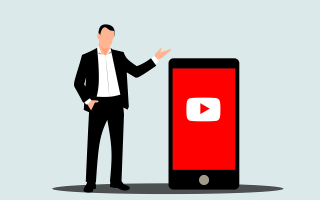In today’s digital environment, video content is king. Whether you’re a content creator, marketer, or business owner, video is a powerful tool to engage with your audience, tell your brand story, and increase conversions.
However, coming up with new and fresh video content ideas can be a challenge, especially if you’re short on time or creativity.
This is where ChatGPT comes in. As a large language model trained by OpenAI, based on the GPT-3.5 architecture, ChatGPT can help you generate video content ideas quickly and easily.
In this blog post, we’ll explore how ChatGPT works and how it can benefit your video content strategy.
What is ChatGPT?
ChatGPT is a cutting-edge language model that uses deep learning algorithms to analyze and understand human language. It can read, write, and generate text in a way that mimics human communication.
With over 175 billion parameters, ChatGPT is one of the most advanced language models in the world, capable of generating high-quality text on a wide range of topics.
ChatGPT can be accessed through various platforms, including its website, API, and plugins. Users can input a prompt or question, and ChatGPT will generate a response or suggestion based on its vast knowledge base.
This makes ChatGPT a valuable tool for content creation, marketing, customer service, and more.
How ChatGPT Can Help You Generate Video Content Ideas.
Generating video content ideas can be a daunting task, but ChatGPT can make it easier. By inputting a prompt or question related to your niche or topic, ChatGPT can generate a list of video content ideas that you can use to create engaging and informative videos.
Here are some examples of how ChatGPT can help you generate video content ideas:
1. Brainstorming Session.
If you’re struggling to come up with video content ideas, you can use ChatGPT as a brainstorming tool. Input a prompt like “video content ideas for my YouTube channel,” and ChatGPT will generate a list of ideas that you can use as a starting point.
You can also type in specific keywords related to your niche or audience to generate more targeted ideas.
2. Video Topic Research.
If you have a general idea of the video topic you want to cover, but you’re not sure what angle to take or what specific aspects to focus on, ChatGPT can help. Type in a prompt like “video content ideas on [topic],” and ChatGPT will generate a list of specific angles and ideas that you can use to create your video.
3. Trending Topics.
If you want to create video content that is relevant and timely, ChatGPT can help you identify trending topics in your niche or industry. Type in a prompt like “video content ideas on trending topics in [niche],” and ChatGPT will generate a list of ideas based on the latest trends and news in your industry.
This can help you stay ahead of the curve and create content that resonates with your audience.
4. Competitive Analysis.
If you want to create video content that stands out from your competitors, ChatGPT can help you analyze their content and identify gaps or opportunities. Input a prompt such as “video content ideas to differentiate from my competitors,” and ChatGPT will generate a list of ideas based on your competitors’ content and audience.
This can help you create content that is unique and valuable to your audience.
How ChatGPT Can Help You Create Engaging Video Content for Your Courses
Tips for Using ChatGPT to Generate Video Content Ideas.
While ChatGPT can be a valuable tool for generating video content ideas, it’s important to keep in mind that it’s not a perfect solution.
Provide Specific Prompts.
When you use ChatGPT to generate ideas, the quality and relevance of the suggestions you receive will depend largely on the quality of the prompts you provide. This is because ChatGPT’s algorithm is trained on a vast amount of data, but it still relies on context and specific information to generate relevant and accurate ideas.
Here are some tips for providing specific prompts when using ChatGPT:
1. Narrow Down Your Topic.
The more specific your topic, the easier it will be for ChatGPT to generate relevant ideas. For example, if you’re a beauty brand, don’t just ask for “video content ideas”. Instead, try something like “video content ideas for summer makeup tutorials” or “video content ideas for skincare routines for oily skin”.
2. Use Targeted Keywords.
Incorporate targeted keywords into your prompts to help ChatGPT understand the focus of your content. For example, if you run a travel blog, use keywords like “destination”, “tips”, and “itinerary” to help generate relevant ideas.
3. Consider Your Audience.
Think about your target audience and what types of video content they would be interested in. For example, if you run a fitness brand targeting busy moms, use prompts like “video content ideas for quick at-home workouts” or “video content ideas for healthy snacks on-the-go.
4. Be Clear and Concise.
Make sure your prompts are clear and concise so that ChatGPT can understand what you’re looking for. Avoid vague or overly broad prompts that could lead to irrelevant or off-topic suggestions.
By providing specific prompts that are tailored to your brand, audience, and topic, you can improve the quality and relevance of the video content ideas generated by ChatGPT. So take some time to think about your prompts and how you can make them as targeted and specific as possible.
Edit and Refine Suggestions.
Editing and refining the suggestions generated by ChatGPT is an important step in the process of using it to generate video content ideas. While ChatGPT’s suggestions can be a great starting point, it’s important to make them your own and tailor them to your brand and audience.
Here are some tips for editing and refining ChatGPT’s suggestions:
1. Use Your Own Voice and Style.
When editing ChatGPT’s suggestions, use your own voice and style to make them your own. This will help your video content feel authentic and aligned with your brand. If ChatGPT suggests a video idea, try rephrasing it in a way that sounds more natural to you and your audience.
2. Ensure Consistency with Your Brand Values and Messaging.
Make sure that the suggestions generated by ChatGPT align with your brand’s values and messaging. If ChatGPT suggests a video idea that doesn’t align with your brand, either discard it or tweak it so that it does.
3. Add Your Own Spin.
Add your own creative spin to the suggestions generated by ChatGPT to make them unique and stand out from the competition. For example, if ChatGPT suggests a tutorial video, try adding your own twist to make it more interesting and engaging for your audience.
4. Consider Your Production Capabilities.
When refining ChatGPT’s suggestions, consider your production capabilities. Can you realistically produce the video idea within your budget and timeframe? If not, try tweaking the idea to make it more feasible.
5. Test and Iterate.
Once you’ve refined ChatGPT’s suggestions, test them out and see how your audience responds. Use analytics and feedback to determine which video ideas are resonating with your audience and which ones are not. Use this information to iterate and refine your video content strategy over time.
By editing and refining ChatGPT’s suggestions, you can ensure that your video content is aligned with your brand and resonates with your audience. So don’t be afraid to put your own spin on ChatGPT’s suggestions and make them your own.
With a little creativity and some careful consideration, you can create video content that stands out from the crowd and engages your audience.
How to Create High-Quality Blog Posts and Articles Using ChatGPT
Combine Ideas.
Combining multiple ideas generated by ChatGPT is a great way to create even more unique and creative video content ideas. Here are some tips for combining ideas:
1. Look for Overlapping Themes.
As you review the ideas generated by ChatGPT, look for overlapping themes or topics that could be combined to create a new and unique video idea. For example, if ChatGPT suggests a video idea for a product review and another idea for a tutorial on a related topic, you could combine the two to create a hybrid product review and tutorial video.
2. Mix and Match Different Formats.
Another way to combine ideas is to mix and match different video formats. For example, if ChatGPT suggests a video idea for a behind-the-scenes look at your business and another idea for a Q&A with a customer, you could combine the two to create a behind-the-scenes Q&A video.
3. Consider Different Angles.
Think about different angles or perspectives that you could take on a particular topic. For example, if ChatGPT suggests a video idea for a recipe tutorial, you could combine it with an idea for a video about the health benefits of the main ingredient in the recipe to create a unique and informative cooking video.
4. Get Creative with Titles.
Once you’ve combined multiple ideas, get creative with your titles to make them stand out and pique your audience’s interest. For example, if you’ve combined the idea for a behind-the-scenes look at your business with an idea for a Q&A with a customer, you could title the video “Inside Our Business: A Customer Q&A”.
Combining ideas is a great way to create unique and engaging video content that stands out from the competition. So don’t be afraid to get creative and experiment with different combinations of ideas. With a little bit of effort, you can create video content that your audience will love.
Use Other Resources.
While ChatGPT can be a great resource for generating video content ideas, it’s not the only one. Use other resources such as keyword research tools, industry news sources, and social media trends to supplement and enhance your video content strategy.
Conclusion.
Video content is a powerful tool for engaging with your audience and telling your brand story. However, coming up with new and fresh video content ideas can be a challenge. ChatGPT can help by generating ideas quickly and easily based on your prompts and questions.
By using ChatGPT effectively and combining its suggestions with your own creativity and expertise, you can create compelling and informative video content that resonates with your audience.
So, why not give ChatGPT a try and see how it can help you with your video content strategy? With its vast knowledge base and advanced language processing capabilities, it’s sure to provide you with a wealth of ideas and inspiration for your next video project.




